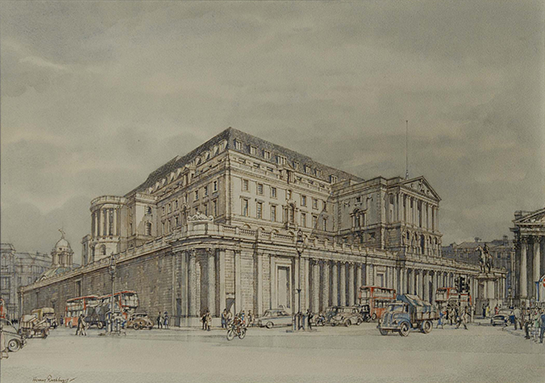The Bank of England opened in rented accommodation on Cheapside in London in 1694. Today, it’s based in a building on nearby Threadneedle Street which covers three acres. Our collection shows how the exterior of its building has changed since the site was purchased in 1724.
1694
Mercers' Hall
For its first 40 years the Bank of England rented its main premises.
The first of these was Mercers' Hall in Cheapside. The Bank opened here in 1694 with 19 staff.
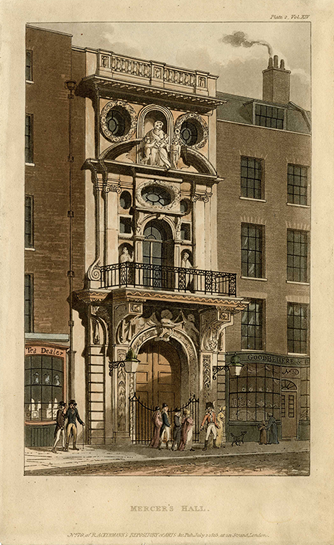
1694
The Bank of England in ye Poultry
At the end of 1694 the Bank of England moved to nearby Grocers Hall where it had more space. It stayed here for the next forty years during which time the number of its staff increased.
The people running the Bank began to think about buying a site and building more suitable premises.
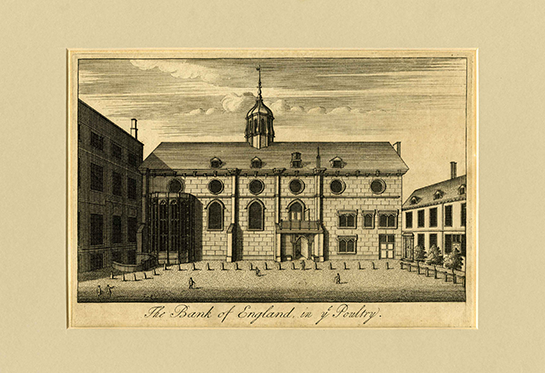
1724
Sir John Houblon’s House
In 1724 the Bank of England bought a site on Threadneedle Street.
The most important building here was this large house which had belonged to Sir John Houblon, the Bank’s first Governor. It was demolished to make way for the new building.
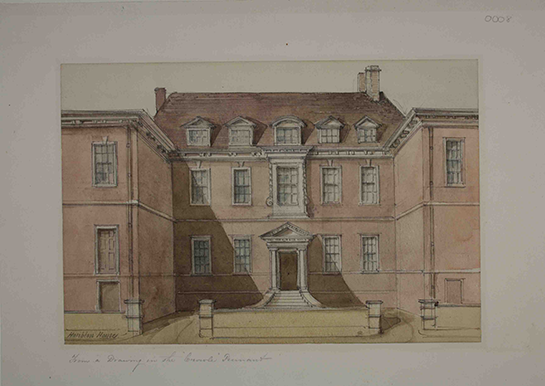
1734
A Perspective View of the Bank of England
George Sampson (d. 1759) was chosen as the architect for the Bank of England’s new building on Threadneedle Street.
The building he designed was deep and narrow. The public rooms were towards the front and more private offices were arranged around the quadrangle at the back.
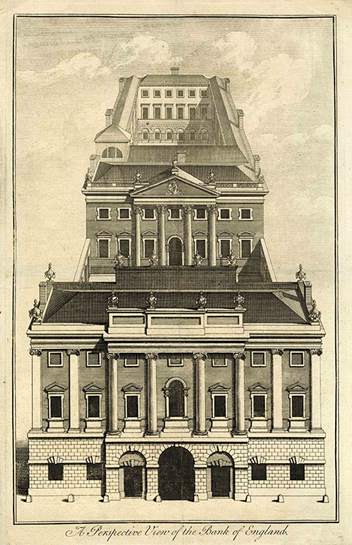
1760s
A View of the Old Bank of England
In late 1700s, architect Robert Taylor (1714–1788) added two wings to the Threadneedle Street building.
The first wing was added to the east of the central block in the 1760s. The second wing was added to the west of the central block in the 1780s. You can see both in this painting by Thomas Shepherd.
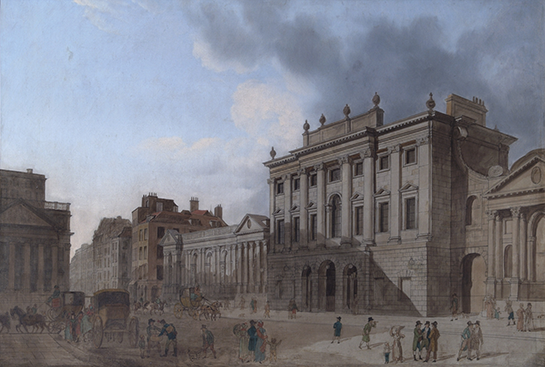
1780s
The Bank of England and the Royal Exchange
William Marlow (1740–1813) painted this view of the Bank of England and the old Royal Exchange from Bank junction.
It shows the wings added by Robert Taylor. You can see St Bartholomew's Church on the right. This church was demolished by 1841.
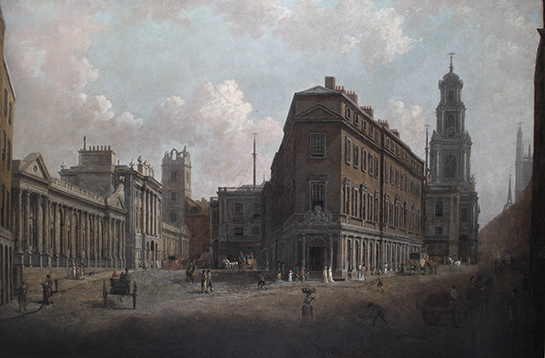
1788
Bank of England
John Soane (1753–1837) was appointed as the Bank of England’s architect in 1788. Soane rebuilt much of the Threadneedle Street building.
This is a painting of the building at that time from the direction of Mansion House.
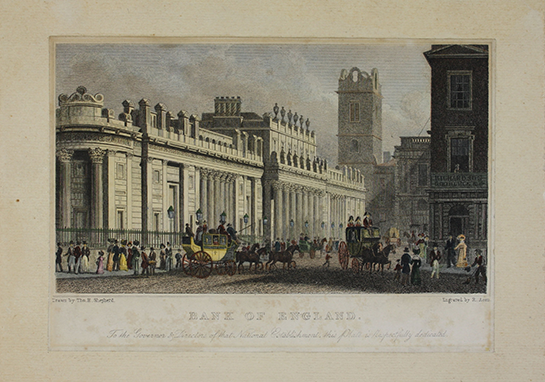
1921
The Bank from Mansion House
There were no significant changes to the Bank of England between 1823 and 1921. So by the 20th century, it clearly needed updating.
The architect Herbert Baker (1862–1946) completely rebuilt it between 1921 and 1942. Since then, its exterior has remained unchanged.
